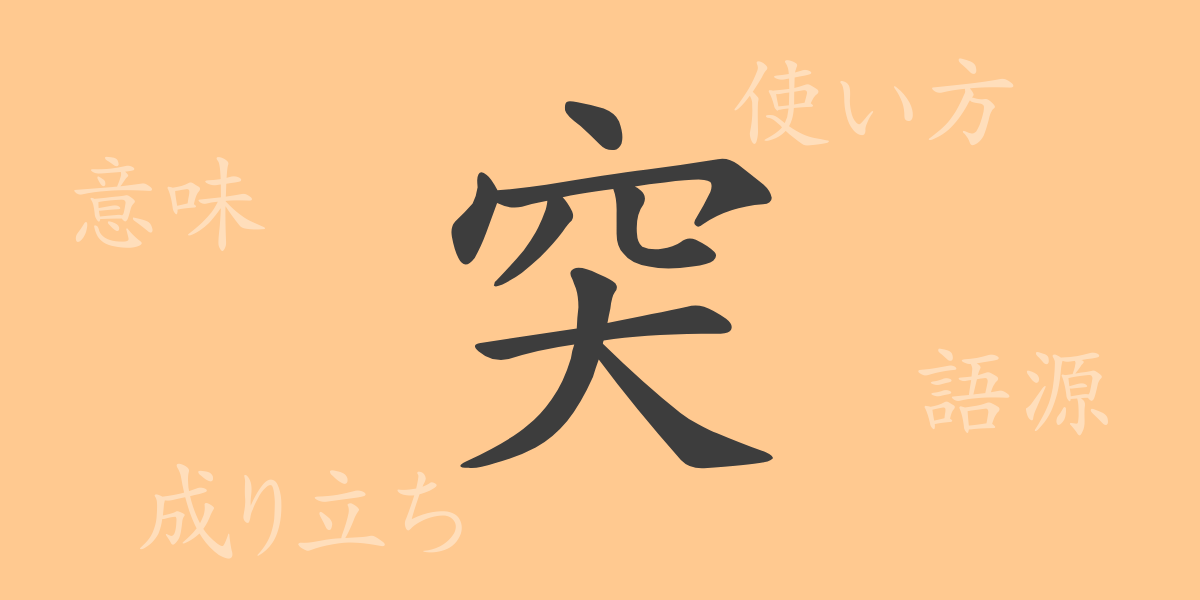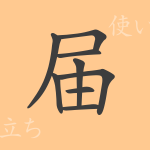Exploring the history and meanings embedded in a single Kanji offers a fascinating glimpse into the depths of the Japanese language. This time, we spotlight the commonly used Kanji ‘突 (トツ)’, exploring its origins and contemporary usage. Let’s discover together how this dynamic character enriches Japanese expressions with its vigorous image.
Origins of ‘突 (トツ)’
The Kanji ‘突’ originates from ancient Chinese oracle bone inscriptions. Initially depicting the act of breaking through a wall, it evolved to symbolize more abstract concepts. ‘突’ conveys the image of forcefully pushing aside obstacles, embodying aggressive and direct action, which has been passed down through the ages.
Meaning and Usage of ‘突 (トツ)’
‘突’ carries meanings like ‘suddenly’, ‘to push forward strongly’, and ‘to stab’, highlighting the momentum and directness of actions. It appears in expressions such as ‘突進 (つっしん)’, ‘突破 (とっぱ)’, and ‘突き進む (つきすすむ)’, which describe vigorously advancing something. Additionally, it is used in ‘突然 (とつぜん)’, representing unexpected events or changes.
Readings, Stroke Count, and Radical of ‘突 (トツ)’
The Kanji ‘突’ is rich with information derived from its form and meaning.
- Readings: On’yomi ‘トツ’, Kun’yomi ‘つ.く’
- Stroke Count: Total of 8 strokes
- Radical: 穴 (あなかんむり)
Phrases, Idioms, and Proverbs Using ‘突 (トツ)’
There are numerous idioms and proverbs including ‘突’, each illustrating the richness of Japanese expressions. For instance, ‘突如 (とつじょ)’ means ‘suddenly’, similar to ‘突然’; ‘突破 (とっぱ)’ expresses a strong will to overcome obstacles; ‘突撃 (とつげき)’ denotes aggressive action. The phrase ‘一刀両断 (いっとうりょうだん)’ means to make a clear and decisive judgment, while ‘矛盾 (むじゅん)’—a contradiction between a spear and a shield—refers to a logical paradox.
Conclusion on ‘突 (トツ)’
The Kanji ‘突’ brings its strong imagery and dynamic meanings to a wide range of expressions in the Japanese language. From indicating dynamic actions to denoting sudden incidents, ‘突’ is versatile, teaching us about the depth of words and the expressive power of Japanese. Understanding the history and meanings imbued in this single character allows us to appreciate the richness of Japanese expressions more deeply.

























